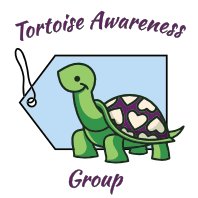Diet
Sulcatas should be fed a diet that is very high in fibre, about 80% grasses and 20% safe weeds and flowers with sprinkles of supplement. Lump chalk is recommended for nibbling on to support their need for calcium to ensure good growth. They should NOT be fed any form of fruit or protein. Water should always be available.
The Indoor Enclosure
Large vivariums are often used for the young small Sulcata, but it must be remembered that they grow rapidly and any indoor enclosure will need to be upsized frequently.
Substrate
The substrate for Sulcatas can be topsoil or a mix of topsoil/coir. A layer of grass hay can be added at one end to provide some shelter. The substrate should be kept dry as Sulcatas are sensitive to damp conditions.
Lighting/Temperature
Heat should be provided using a heat-emitting bulb in a lamp from overhead. Ideally, this heat lamp should hang just about 12 inches above the substrate. The heat-emitting bulb should be providing a basking spot of 32c to 34c at one end of the enclosure and 24c to 26c at the cool end. In addition, UV strips (or combi bulbs) should be fitted. The UVB is necessary for Vitamin D3 production (needed for calcium absorption, proper muscle functioning, etc.). The nighttime temperature should not drop below 22c. .
Outdoor Enclosure
All tortoises should have an outdoor enclosure to exercise, eat weeds, and get natural UV. But the outdoor enclosure is especially important for an adult Sulcata. Due to their size, they should have a space that is at least 10m square with a heated shed or similar outdoor building around 10 feet by 10 feet. Due to their size and strength, all light/heat fittings should be well out of reach of the tortoise and any structure used for outside accommodation should be strong and solid.
Hibernation
Sulcatas are NOT a hibernating species. Never attempt to hibernate a Sulcata, and do not let him get too cold.
Additional Information
Sulcatas (also called African Spurred Tortoises) are the third largest species on the planet after the giant tortoises from the Galapagos and Aldabras. They are found in hot, dry scrubland areas in North-Central Africa, south of the Sahara Desert. Adult females reach about 20 inches and 65 to 75 pounds, while adult males grow to about 30 inches and 125 to 150 pounds. They live in deep burrows which give them relief from the heat. All that adds up to mean that these tortoises need a lot of space, they need a lot of food, they go to the bathroom a lot, they are very strong, and they can be very destructive. They dig large holes, can destroy fences, can uproot trees, etc. They are usually very cute and small at the pet shop, but most people will not be able to handle an adult Sulcata, so they are often put up for adoption. If you think you can provide for a Sulcata, please check for rescues first.
